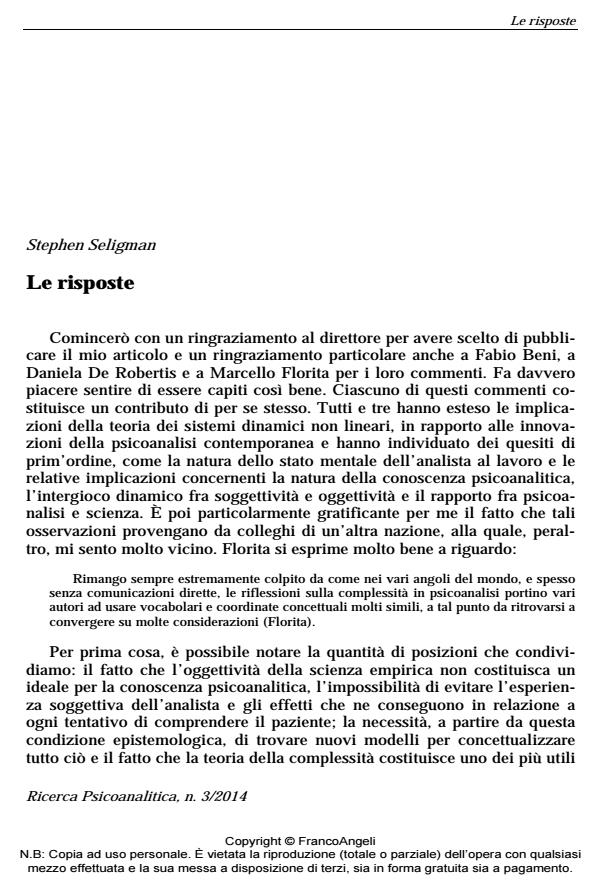Answers
Journal title RICERCA PSICOANALITICA
Author/s Stephen Seligman
Publishing Year 2014 Issue 2014/3
Language Italian Pages 8 P. 55-62 File size 33 KB
DOI 10.3280/RPR2014-003006
DOI is like a bar code for intellectual property: to have more infomation
click here
Below, you can see the article first page
If you want to buy this article in PDF format, you can do it, following the instructions to buy download credits

FrancoAngeli is member of Publishers International Linking Association, Inc (PILA), a not-for-profit association which run the CrossRef service enabling links to and from online scholarly content.
In answering the criticisms to his paper, Seligman provides evidence of his consistency because he uses them to make his discourse even more complex, based on the and/and method rather than the or/or method typical of many academic discussions. This approach allows him to show with even more clarity a paradoxical aspect of an analyst’s mental functioning: keeping attention focused and at the same time accepting to be often interrupted and distracted from his object. Another issue discussed here is the misconception of considering scientific and linear thinking as one and the same. Lastly, going beyond the conventional terminology allows the Author to see psychoanalysis as a means for reaching something more essential about being - a term common to Winnicott and Heidegger
Stephen Seligman, Le risposte in "RICERCA PSICOANALITICA" 3/2014, pp 55-62, DOI: 10.3280/RPR2014-003006